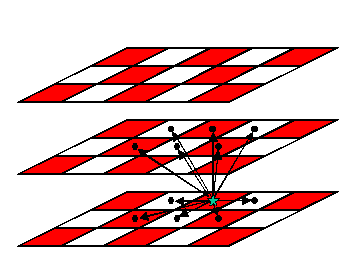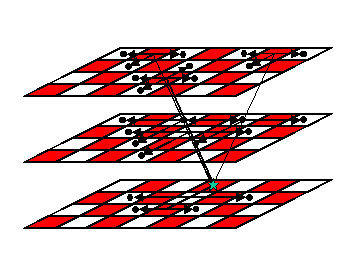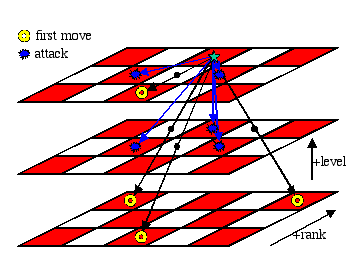King
The King can move one square in any direction. This restricts the piece to any square within a three-square cube around it's current position. Note that the King can only move from a main board with the assistance of an attack board.
26 moves
(±1,0,0) (0,±1,0) (±1,±1,0) [standard 2D rules]
(0,0,±1) (±1,0,±1) (0,±1,±1) (±1,±1,±1)






